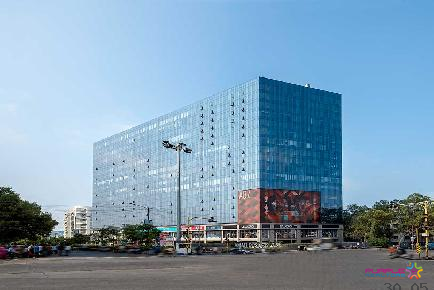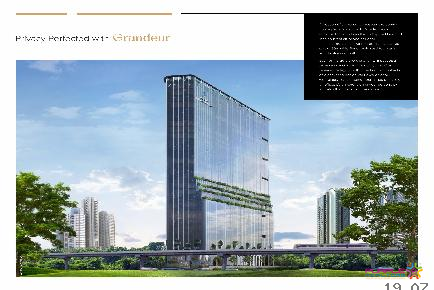
SBH Solitaire Business Hub 3 Baner Pune Office Space Commercial Project Spaces For Sale and Lease
Baner,Pune
Pune
The 'Smart City' mission — in the simplest terms — aims to build infrastructure that will ensure both quality of life and sustainable environment, using new, smart solutions.
Currently, thousands of crores have been earmarked to build 100 such cities — Pune is one amongst the first 20 selected cities.

The smart city initiatives are implemented using several area-based and pancity approaches. While the area-based approach deals with solutions for a specific urban area, pan-city approach considers the entire city. The smart city mission then is being limited to the urban limits and serves the population residing within its administrative boundaries.
But, a city does not stand in isolation. Most problems faced by a city today emerge from beyond the urban boundary. For example, the cause of air pollution in Delhi is largely due to burning of crop residue in neighbouring Punjab and Haryana. In Pune, major rivers are being polluted due to waste disposal from industries upstream. Therefore, not all solutions can be found within the city boundaries. To look for innovative solutions, the "region" must be the unit for a policy's focus. In planning parlance, the term 'Metropolitan Region' is used to describe a large urban agglomeration that includes both urban and rural areas. A metropolitan region's boundaries extend much beyond administrative boundaries of a city.
This is why the Pune Metropolitan Region (PMR) is being recognised as an important centre in the country. The core of PMR comprises the Pune Municipal Corporation and the Pimpri Chinchwad Municipal Corporation. Out of a total population of 94,20,408, 77% is concentrated in the core area. The total area of the PMR is 7,257 sqkm, of which the core occupies just 25%. In the PMR, urban areas include the two municipal corporations, 10 statutory towns, and three cantonment areas. Among the rural areas, there are 820 villages. All this falls under the the Pune Metropolitan Region Development Authority, formed only in 2013.
Now, heavy migration into the core areas has triggered a range of problems — from traffic jams to widespread power and water shortages. Also, most of the expansion of the city is happening beyond the administrative boundaries of the municipal corporations — Chakan in the north, Uruli Kanchan to the east and Khed to the south. They lack applicability of building bylaws leading to haphazard and unsafe constructions. Therefore, there is a need to look at Pune as an integrated region.
Smart city plans, in their current form, do not take into consideration the problems existing in the larger region. They only aim at the retrofitting of infrastructure within city limits. Also, although "smart" measures are being implemented within Pune city, the same solutions cannot help at the regional level.
Many of the problems of a city can only be addressed by adequate planning of the entire region. This regional focus ensures that critical resources of the region are not exploited or destroyed by urbanisation. A smart regional plan should identify future growth centres around Pune core city, especially in the northern part where industries are set up. Such growth centres need to be provided with infrastructure that can endure population growth. Such measures will lead to decongestion of the core city as well as reduce the burden on existing infrastructure.
Under the smart economic policies, agricultural infrastructure such as warehouses and cold storage facilities will ensure availability of food for the projected population as well as sustainability of farmers' incomes. In addition to this, restricting development activities within eco-sensitive zones of the Western Ghats will maintain the region's ecological stability. A regional plan, thus prepared, will recognise the value of forests and fertile agricultural land.
Isolated focus on master plans and implementation of smart city proposals fail to address such aspects of regional analysis. A true Smart City can be only achieved by focusing on the entire region.

SBH Solitaire Business Hub 3 Baner Pune Office Space Commercial Project Spaces For Sale and Lease
Baner,Pune

Poonawalla Towers by Amar Builders Bund Garden Pune Commercial Project
Bund Garden Road,Pune

La Commercia Baner Pune Commercial Shop Showroom Office Space For Sale Lease
Baner,Pune

YBZ Yashada Business Zone Baner Pune Commercial Project
Baner,Pune

M Triumph by Malpani Shivajinagar Pune Showroom Office Space
Shivajinagar,Pune

Rahul Altimus Baner Pune Commercial Project
Baner,Pune

ABZ AMAR BUSINESS ZONE BANER PUNE
Baner,Pune

One Place F C Road Pune by Mittal Brothers Commercial Project Shop Showroom Office Space For Sale n Lease Price Location Floor Plan
F C Road,Pune

Jhamtani SpaceBiz Baner Pune Commercial Project Office Space
Baner,Pune

Malpani M Aryabhatta Baner Pune Commercial Project For Lease
Baner,Pune